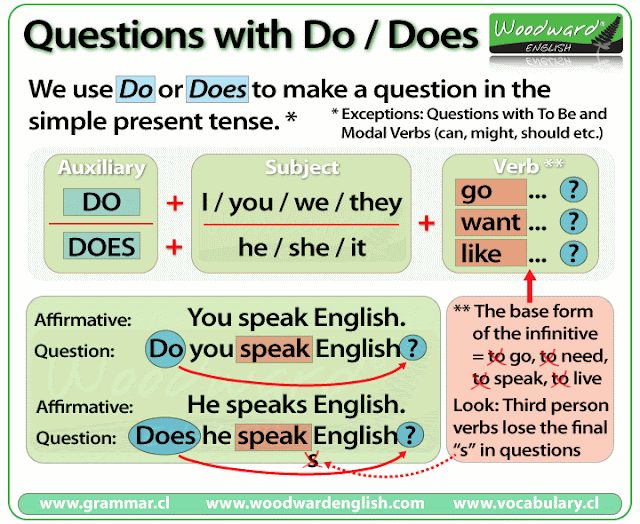Offering Conversational English
Thursday, May 18, 2017
Tuesday, May 9, 2017
To all my students
Dear students from 3rd to 6th grades,
School year is about to end . It was a pleasure having you as my students this year. I enjoyed this opportunity of serving you part of my experiences. Hoping you enjoy our upcoming summer vacation and that you finish this school year with good grades and a lot of growing.
You are always my bees.
My blessings.😅😘
Love always ! Mrs.Reyes
Saturday, May 6, 2017
More practice
To create a question that will be answered with a yes or no, start thequestion with Do, Does or Did, (Doesn't, Don't, Didn't) for a negativequestion) then add a subject (the person or thing that does the action) followed by the base form of the verb and only then add the rest of the sentence.
Using Did
Did indicates past tense
Did you study for the Final Test?
Yes, I did!
To create a question that will be answered with a yes or no, start the question with Do, Does or Did, (Doesn't, Don't, Didn't) for a negativequestion) then add a subject (the person or thing that does the action) followed by the base form of the verb and only then add the rest of the sentence.
Answering Do and Does questions
To make a question in English we normally use Do or Does. It is normally put at the beginning of the question (before the subject).
Affirmative: You speak Spanish.
Question: Do you speak Spanish?
You will see that we add DO at the beginning of the affirmative sentence to make it a question. We useDo when the subject is I, you, we or they.
Affirmative: He speaks Spanish.
Question: Does he speak Spanish?
Yes, he does!😁
No, he doesn't yet. But he keeps trying.
When the subject is he, she or it, we add DOES at the beginning to make the affirmative sentence a question. Notice that the letter S at the end of the verb in the affirmative sentence (because it is in third person) disappears in the question. We will see the reason why below.
Using do and does
When the subject is he, she or it, we add DOES at the beginning to make the affirmative sentence a question. Notice that the letter S at the end of the verb in the affirmative sentence (because it is in third person) disappears in the question.
Friday, May 5, 2017
Passive voice
Study this example
Mary answers the test. ( Present tense)
The test is answered by Mary.
Mary answered the test. ( Past tense)
The test was answered by Mary.
The passive voice is a grammatical construction (specifically, a "voice"). The noun or noun phrase that would be the object of an active sentence (such as Our troops defeated the enemy) appears as the subject of a sentence or clause in the passive voice (e.g. The enemy was defeated by our troops).
There are many tutorials in you tube for the use of this voice or form of expression. Keep practicing.
Wednesday, May 3, 2017
6th grade
Your study guide for the Final Test will be reposted today in any instance as possible. Yesterday's post was unintentionally mistaken. Thxs a lot



